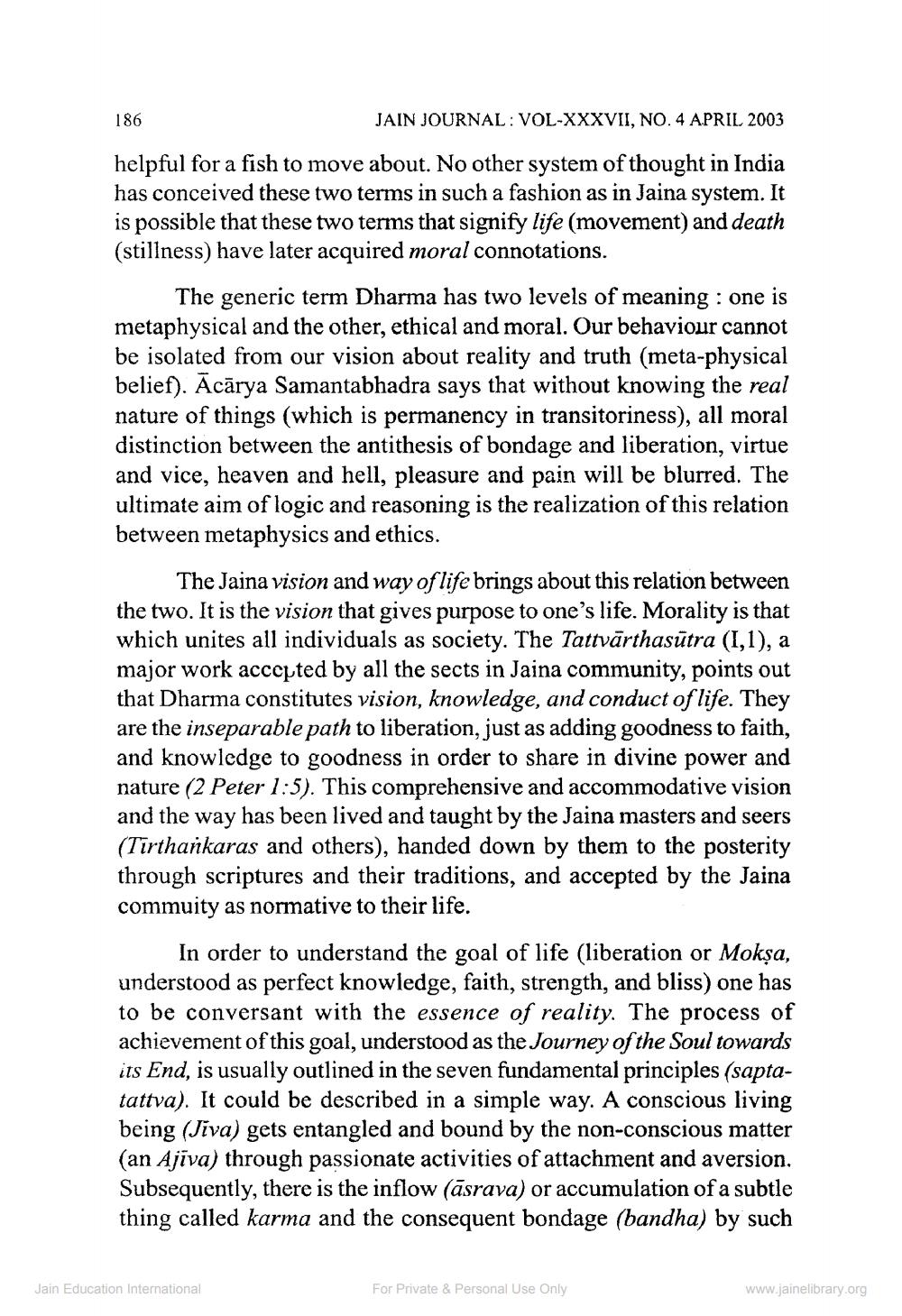________________
186
JAIN JOURNAL: VOL-XXXVII, NO. 4 APRIL 2003 helpful for a fish to move about. No other system of thought in India has conceived these two terms in such a fashion as in Jaina system. It is possible that these two terms that signify life (movement) and death (stillness) have later acquired moral connotations.
The generic term Dharma has two levels of meaning: one is metaphysical and the other, ethical and moral. Our behaviour cannot be isolated from our vision about reality and truth (meta-physical belief). Ācārya Samantabhadra says that without knowing the real nature of things (which is permanency in transitoriness), all moral distinction between the antithesis of bondage and liberation, virtue and vice, heaven and hell, pleasure and pain will be blurred. The ultimate aim of logic and reasoning is the realization of this relation between metaphysics and ethics.
The Jaina vision and way of life brings about this relation between the two. It is the vision that gives purpose to one's life. Morality is that which unites all individuals as society. The Tattvārthasūtra (1,1), a major work accepted by all the sects in Jaina community, points out that Dharma constitutes vision, knowledge, and conduct of life. They are the inseparable path to liberation, just as adding goodness to faith, and knowledge to goodness in order to share in divine power and nature (2 Peter 1:5). This comprehensive and accommodative vision and the way has been lived and taught by the Jaina masters and seers (Tirtharkaras and others), handed down by them to the posterity through scriptures and their traditions, and accepted by the Jaina commuity as normative to their life.
In order to understand the goal of life (liberation or Mokşa, understood as perfect knowledge, faith, strength, and bliss) one has to be conversant with the essence of reality. The process of achievement of this goal, understood as the Journey of the Soul towards its End, is usually outlined in the seven fundamental principles (saptatattva). It could be described in a simple way. A conscious living being (Jiva) gets entangled and bound by the non-conscious matter (an Ajīva) through passionate activities of attachment and aversion, Subsequently, there is the inflow (āsrava) or accumulation of a subtle thing called karma and the consequent bondage (bandha) by such
Jain Education International
For Private & Personal Use Only
www.jainelibrary.org




